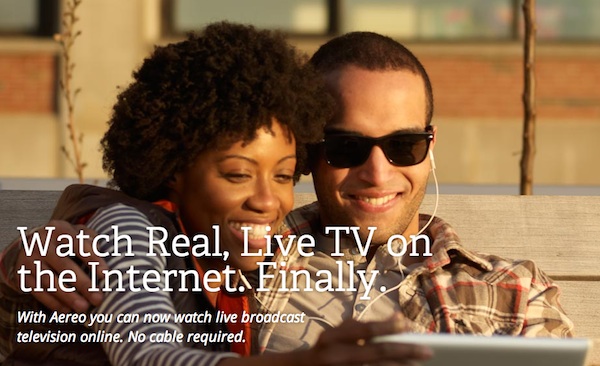
This week’s essential reads: The few key reads this week are Ryan Singel on the FCC’s Internet regulation proposal, The New York Times’ David Carr on the significance of the Aereo Supreme Court case, and The Guardian’s James Ball on the new wave of explanatory journalism sites.
A net neutrality alarm: Two big stories this week dealt with the degree to which large media companies will be able to control the ways content is transmitted. The bigger one came Wednesday, when The Wall Street Journal and The New York Times reported that the U.S. Federal Communications Commission was about to propose new rules that would allow Internet service providers to sign deals with content providers allowing faster connection speeds to their sites. The new rules would supposedly be an effort to protect “net neutrality” — a principle that ISPs shouldn’t be able to discriminate against Internet traffic to certain sites — but would do precisely the opposite.
FCC chairman Tom Wheeler objected that the reports that his proposal would kill net neutrality were “flat wrong,” and when he announced the proposal on Thursday, Wheeler emphasized that deals that are found not to be commercially reasonable or that are anti-competitive or harm consumers, won’t be allowed. But as Contextly’s Ryan Singel argued in a good explanatory piece, since U.S. Internet providers operate in an essentially non-competitive market, a “commercially reasonable” standard is no protection against those providers squeezing each major content provider — and especially smaller, up-and-coming ones — in individual deals.
Gigaom’s Stacey Higginbotham also looked a bit deeper into the “commercially reasonable” standard, examining what it might entail and noting the key shift from “unreasonable discrimination” in the FCC’s old rules to “commercially reasonable” in these, and in another post, she expressed concern that the standard sounds as though will essentially allow ISPs to set the standards, with consumers or smaller competitors left to complain ineffectually well after the fact.
Instapaper founder Marco Arment and Techdirt’s Mike Masnick both criticized the characterization that the new rules would allow ISPs to create a “fast lane” for particular sites, arguing that wouldn’t speeding things up for some, but actually slowing them down for everyone else. “This is not making anything faster,” said Arment, “it’s allowing ISPs to selectively slow down traffic that they don’t strategically or financially benefit from, and only permit traffic from their partners to run at the speeds that everything runs at today.” Masnick also made the argument (along with several others) that the regulations will allow ISPs to double-charge big companies, and by extension, consumers.
So what would all this mean, in the big picture, besides increased costs for us and more profits for the telecom companies? Both TechCrunch’s Alex Wilhelm and Columbia law professor Tim Wu argued that it could stifle online innovation and favor the existing giants. “If enacted, it will profoundly change the Internet as a platform for free speech and small-scale innovation. It threatens to make the Internet just like everything else in American society: unequal in a way that deeply threatens our long-term prosperity,” Wu wrote.
As Singel noted, the FCC could ensure true net neutrality by simply classifying broadband providers as “common carriers” just as telephones are, and he urged readers to call on the FCC to find the political will to do that. At The Guardian, Dan Gillmor also saw that as a solution, along with creating genuine competition among ISPs. Likewise, Bloomberg Businessweek’s Joshua Brustein said net neutrality isn’t a silver-bullet solution, and the bigger problem is anti-competitive behavior by ISPs. As BuzzFeed’s Charlie Warzel reported, open Internet activists are planning for a day of coordinated action on May 15, the day the proposal goes out for public comment.

Aereo, free TV, and the cloud: The other of these two stories about big media and content transmission came earlier this week, when Aereo, a startup that allows people to stream live over-the-air TV on any device for a monthly fee by renting out one of its many tiny antennas, had its legality argued before the U.S. Supreme Court. There was plenty of good explanation of what’s at stake here: The Columbia Journalism Review’s Sarah Laskow reviewed the media coverage of the case, The New York Times’ David Carr and The Washington Post’s Cecilia Kang and Robert Barnes wrote good curtain-raisers in advance of the arguments, and Vox’s Timothy B. Lee, Gawker’s Michelle Dean, and SCOTUSblog’s Amy Howe broke down the case. For a legal deep-dive, read SCOTUSblog’s Lyle Denniston analysis on both sides’ arguments before and after Tuesday’s session.
Carr’s piece gives a good sense of what this case might mean more broadly. Broadcasters are upset because Aereo streams their over-the-air signals without paying the retransmission fees that cable companies pay to carry over-the-air programming, and if Aereo wins the case, it would open the door for other companies to build other legal workarounds to avoid paying those fees. The networks have threatened to take their programming off the free airwaves entirely and move to cable and satellite if they lose, something that, as Carr notes, would decimate local broadcasters and local TV news.
As The Washington Post’s Cecilia Kang wrote, the court seemed skeptical of the legality of Aereo’s tiny-antenna workaround, but was concerned about the precedent a ruling in favor of the broadcasters might set to sharply limit the freedom of other cloud services under copyright laws. In an interview with TechCrunch, Aereo CEO Chet Kanojia was optimistic about his company’s chances, though as Carr noted, if he loses, the company is done. Even if Aereo wins, it faces an uphill path to large-scale viability, as Recode’s Peter Kafka argued.
As for the broadcasters, Fortune’s Peter Suciu talked to experts who said it’s unlikely that they’ll make good on their threats to pull out of over-the-air transmission if they lose, as their business model is too dependent on advertising — and, by extension, gathering the largest audiences possible. They may, however, build an Aereo competitor or try to work with Aereo so that its viewers will count in Nielsen ratings. Andrew Cohen of The Week said no matter how the case turns out, the broadcasters should see the writing on the wall, because “this case is a sign that the industry can no longer control its future the way it once could. It’s a sign that technology is once again pushing up against the law.”
At Politix, Derek Khanna made the case, based on the idea of judicial restraint, to allow Aereo to continue its service. New York magazine’s Kevin Roose made the opposite point, calling Aereo “a clever bit of regulatory arbitrage masquerading as a start-up,” and comparing it to hypothetical automated service that would read and reproduce magazines to you from newsstands without buying them. Forbes’ Jeff Bercovici objected to the analogy, noting that Aereo’s isn’t reselling programming that’s already for sale and arguing that if there were an Aereo-like service like Roose described for free newspapers, they’d love it.
![]() Evaluating The Upshot and explanatory journalism: Another entrant into the quickly growing realm of explanatory journalism launched this week: The New York Times’ new sub-site The Upshot. The site’s editor, David Leonhardt, wrote an introductory piece describing its aim as educating readers about complex issues in a direct, plain-spoken way. The description reminded many of Ezra Klein’s recently launched explanatory site Vox, and its emphasis on data-driven stories bears some resemblance to Nate Silver’s rebooted data journalism site FiveThirtyEight, which was formerly housed at The Times.
Evaluating The Upshot and explanatory journalism: Another entrant into the quickly growing realm of explanatory journalism launched this week: The New York Times’ new sub-site The Upshot. The site’s editor, David Leonhardt, wrote an introductory piece describing its aim as educating readers about complex issues in a direct, plain-spoken way. The description reminded many of Ezra Klein’s recently launched explanatory site Vox, and its emphasis on data-driven stories bears some resemblance to Nate Silver’s rebooted data journalism site FiveThirtyEight, which was formerly housed at The Times.
Initial reviews of the site were generally positive: Alex Howard of the Tow Center appreciated its transparent approach, though Gigaom founder Om Malik said the site was solid but bland — “reading through it felt like homework.” Gigaom’s Mathew Ingram was intrigued by The Upshot’s goal to explain and give context to — to aggregate, in a way — The Times’ other content. At Mother Jones, Simon Rogers called for greater transparency across the new generation of data journalism sites.
Ingram also compared The Upshot with Vox and FiveThirtyEight, wondering if there are really enough interested readers to support all three of these explanatory sites. The Guardian’s James Ball offered the best analysis of the three sites, focusing more deeply on their audience conundrum: Despite their efforts to give basic background information on big stories, “the people who read them are likely to be the ones who already have a pretty good understanding of the news. You’ve got to be a pretty informed (and humble) news consumer to read a news piece and then hunt down a separate site to understand it better.” Ball advised the sites to pick a particular audience and tone, and to focus on personalizing data and explanation.
PandoDaily’s David Holmes pointed out another challenge to the explanatory journalism genre, noting that the best explainers often leave readers with more questions and awaken them to just how complex an issue is. John Herrman of The Awl wrote that by themselves, explanatory sites look like an awkward, disjointed, and preachy cavalcade of headlines because they assume the existence of a stream of misinformation which they are there to clarify or correct. “They are unbroken strings of interruptions that have nothing to interrupt.” And at the Lab, Craig Silverman looked at the challenge of keeping Vox’s card stacks current as knowledge changes and becomes obsolete.Reading roundup: Here’s what else popped up during a busy week:
— Slate introduced its paid membership model, Slate Plus, which offers additional content and access to Slate events and writers for $50 a year. The Lab’s Joshua Benton broke down the plan, and Gigaom’s Mathew Ingram wrote about Slate’s plan as an experiment with the “reverse paywall” model. Digiday’s Ricardo Bilton compared the membership models for news that have cropped up lately.
— The Newspaper Association of America released its annual revenue numbers for the industry, and Poynter’s Rick Edmonds highlighted newspapers’ narrowing revenue losses, noting that digital subscriptions cut into advertising losses a bit. Analyst Alan Mutter, the Columbia Journalism Review’s Ryan Chittum, and the Lab’s Joshua Benton all took a more pessimistic tack, noting that the boosts from those subscriptions are still being swamped by declining ad revenue.— Prominent Reuters columnist Felix Salmon is leaving to join the year-old youth-oriented cable network Fusion, owned by Disney and Univision. Salmon explained why he’s making the move in a post touting the demise of text and the ascendance of multimedia and multiplatform content, and Gigaom’s Mathew Ingram countered that text still has a significant role to play along multimedia.
— Finally, a few interesting and useful pieces of journalism research: The Tow Center’s Claire Wardle and Sam Dubberley released the first part of their report on the use of user-generated content at cable news networks, the Knight Digital Media Center’s Michele McLellan released some numbers from her survey of local news startups, and Poynter’s Craig Silverman wrote about a new study showing the value of “communicating imperfection” in sustaining readers’ trust in journalism.